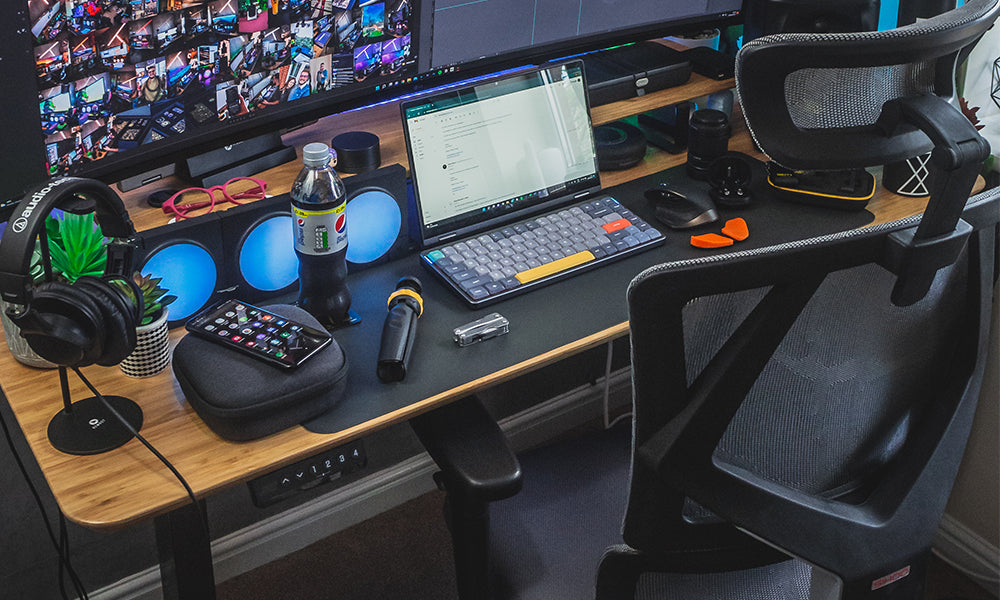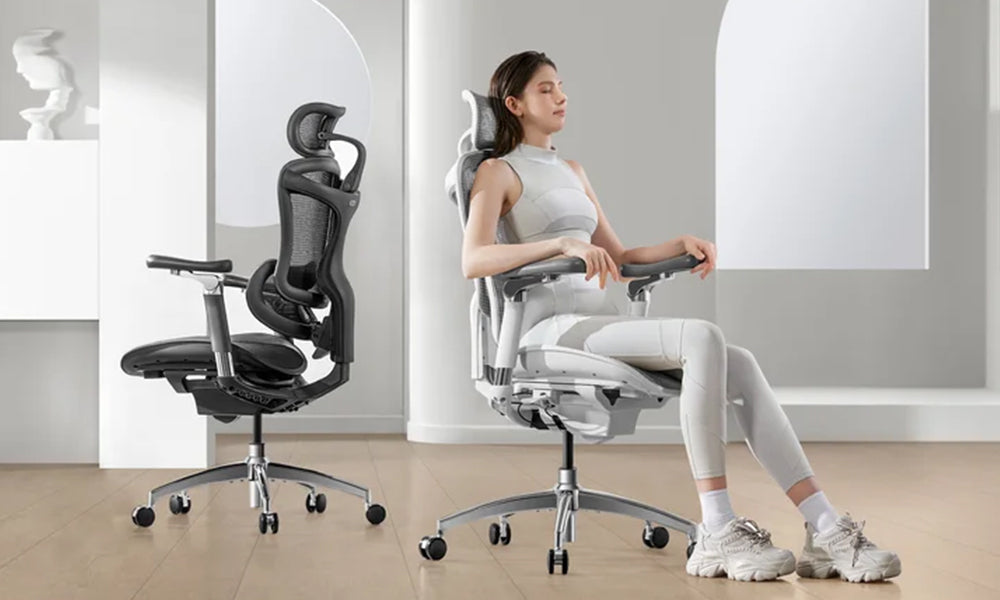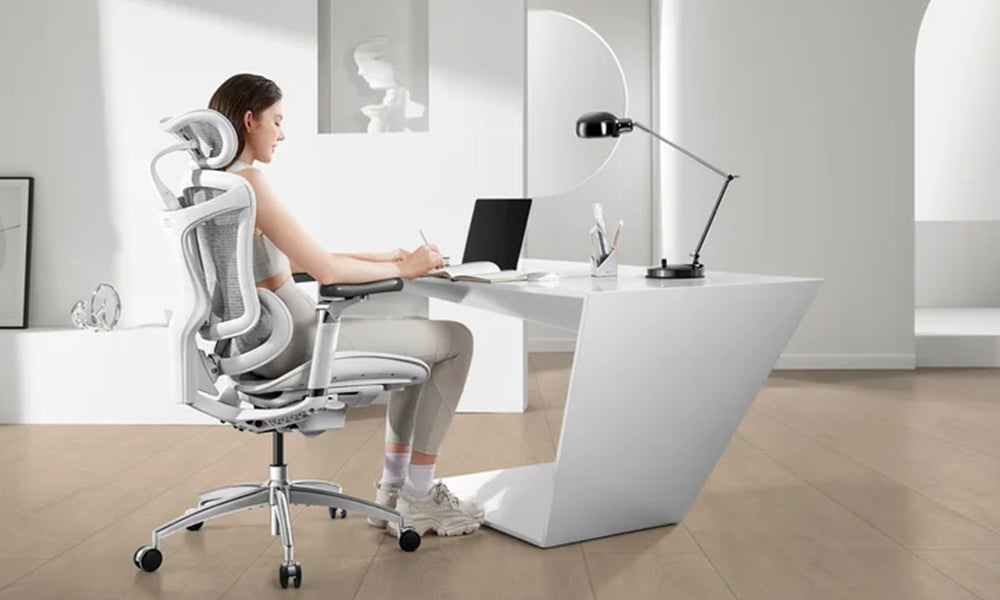Adjusting your office chair to the right height is crucial for comfort and productivity. However, many office chairs come with mechanisms other than a lever to adjust their height. Whether you're dealing with a chair that lacks a traditional lever or one where the lever is malfunctioning, this guide will walk you through various methods to adjust your chair's height without relying on the standard lever mechanism.
Understanding Chair Height Adjustment Mechanisms
Before diving into the methods, it's essential to understand how different office chair height adjustment mechanisms work. Most office chairs use a pneumatic cylinder to adjust height. However, some chairs rely on other mechanisms such as manual adjustment knobs, screw mechanisms, or even gas springs.
- Pneumatic Cylinder: Most modern office chairs use a pneumatic cylinder that adjusts the height with a lever. It’s a gas-filled piston that moves up and down, allowing for smooth height changes.
- Manual Knob or Screw Mechanism: Some chairs use a manual knob or screw mechanism, allowing you to adjust the height by turning the knob or screw.
- Gas Springs: These are similar to pneumatic cylinders but can be adjusted manually or through other mechanisms.
Using the Manual Knob or Screw Mechanism
Many office chairs come with a manual knob or screw mechanism that can be adjusted without a lever. Here’s how to use it:
Step-by-Step Guide:
- Locate the Knob or Screw: Look under the seat of your chair. You should find a knob or screw on the base. This is often near the center where the seat meets the base.
- Turn the Knob or Screw: If your chair has a knob, turn it clockwise to lower the chair and counterclockwise to raise it. For screw mechanisms, use a screwdriver to adjust the height. Turning the screw in one direction will raise the chair, while turning it in the opposite direction will lower it.
- Test the Height: After making adjustments, sit in the chair to ensure it’s at the desired height. Make any further adjustments as needed.
- Secure the Adjustment: Once the height is correct, ensure the knob or screw is tightened securely to prevent the chair from drifting.
Adjusting the Chair with a Gas Spring (without Lever)
Some office chairs use gas springs that can be manually adjusted. Here’s how to do it:
Step-by-Step Guide:
- Locate the Adjustment Mechanism: Gas springs are typically found at the base of the chair. You may need to remove a cover or panel to access the mechanism.
- Adjust the Height: Some gas springs have an adjustment mechanism that allows you to turn or slide the spring to the desired height. This can be done by hand or with a tool, depending on the design.
- Check the Chair Height: Test the chair’s height by sitting in it and making any necessary adjustments. Ensure that the chair remains stable and secure.
- Secure the Mechanism: Make sure that any adjustments you made are securely fastened to prevent the chair from moving unexpectedly.
Using a Seat Riser or Cushion
If your chair’s height adjustment mechanism is malfunctioning or if it doesn’t have one, you can use seat risers or cushions to adjust the height manually.
Step-by-Step Guide:
- Purchase Seat Risers or Cushions: Seat risers are small platforms that can be placed under the chair’s base to elevate it. Cushions can also add height and comfort.
- Place the Risers or Cushions: Position the risers under each leg of the chair or place a cushion on the seat. Ensure that the chair is stable and balanced.
- Test the Height: Sit in the chair to check the height. Make sure you can comfortably reach your desk and that your feet are flat on the ground.
- Adjust as Needed: If the height isn’t quite right, adjust the risers or cushions accordingly.
Using Alternative Methods for Height Adjustment
If none of the above methods work, you can explore alternative solutions:
Step-by-Step Guide:
- Check for Manual Adjustment Levers: Some chairs have hidden levers or knobs that might not be immediately visible. Inspect the chair thoroughly or consult the manufacturer’s manual for information.
- Consider Replacement Parts: If the height adjustment mechanism is broken, consider contacting the manufacturer for replacement parts or a repair service.
- Consult a Professional: For complex mechanisms or repairs, it may be worth consulting a professional. They can diagnose and fix the problem, ensuring your chair functions correctly.
Preventing Future Issues
To avoid future problems with chair height adjustment:
- Regular Maintenance: Regularly check and maintain the height adjustment mechanisms to ensure they are functioning correctly.
- Avoid Overloading: Don’t exceed the chair’s weight limit, as this can damage the adjustment mechanisms.
- Follow Manufacturer’s Guidelines: Adhere to the manufacturer’s recommendations for adjusting and maintaining your chair.
Conclusion
Adjusting your office chair’s height without a lever may seem challenging, but with the right techniques and tools, it’s entirely possible. By understanding your chair’s mechanism and using alternative adjustment methods, you can ensure a comfortable and ergonomic workspace. Remember, the key is to experiment with different approaches and choose the one that best suits your chair’s design and your personal comfort needs.



